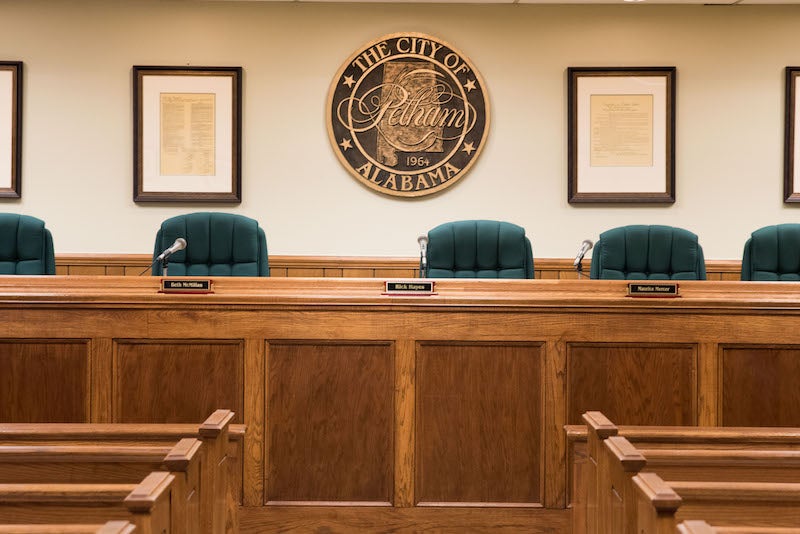Pelham City Council approves rezoning of Ridge Drive property
Published 8:46 am Wednesday, November 17, 2021

- The Pelham City Council approved an amendment to the zone district boundaries regarding property located on Ridge Drive. (File)
|
Getting your Trinity Audio player ready...
|
By MICHELLE LOVE | Staff Writer
PELHAM – The Pelham City Council held a special public hearing on Monday, Nov. 15 as part of its City Council meeting to discuss a possible amendment to the zone district boundaries of certain Pelham property.
The hearing focused on Ordinance No. 135-234, an amendment to the zone district boundaries of the city of Pelham, primarily changing the zoning boundaries for property located on Ridge Drive. The amendment would change the current status of the property from A-1 (Agricultural District) to R-G (Garden Home Residential District).
The first reading for this ordinance occurred on June 7, 2021, and the motion to adopt the ordinance failed to receive a second vote on its original voting day of June 21, 2021.
Steve Issis, owner of Issis and Sons Carpeting and developer of the project, addressed the Council first by expressing his personal connections with the city of Pelham.
“I’ve lived in Pelham for 40 years,” Issis said. “We love Pelham, we love the customers, the people who live in Pelham. They’ve all supported my businesses. The city has been great to me and everyone else, so that being said, I’m very proud to be part of Pelham.”
Issis said he has had several developers approach him about turning his property into a residential neighborhood. As the property is currently zoned as an agricultural district, it is currently zoned for the construction of maximum eight houses.
Issis said after discussing the possibilities with his engineer, Donny Wheeler of Trademark Engineering Services, Inc., and Donny Proctor of Proctor Building Company, they determined it would be better to build 30 garden homes instead of eight traditional houses. He presented to the Council that the project would be beneficial to the city of Pelham by increasing property value of the area.
Issis explained he would also be happy to participate in widening the road connected with the property to alleviate traffic concerns, and he would also be happy to help fix any issues regarding water and drainage, as he has had several people ask him what he intends to do about the issues once development begins.
“They asked me if I would participate in widening the road and fixing the water main, which I agreed to do,” Issis said. “We will do everything we are supposed to do when it comes to the water and the drainage.”
Issis called Wheeler to the podium to provide further details regarding the homes in question. The engineer explained the garden homes would stand approximately at a story and a half with 2,200-2,500 square feet, with front garage and side entry for aesthetics purposes.
“We’re still in the early stages of the design,” Wheeler said. “We will need to go through the storm water and design the ponds, they’ll have to review it, give us the criteria for our design, we’ll make sure we’ll make that and then we’ll review to make sure storm water is handled correctly. We know that’s a big issue, and we want to make sure we do our part.”
The Council opened the floor up to the public for comments regarding thoughts for and against the project, and on both sides Pelham residents brought up the dangers of water running off from impending construction causing flooding and other destruction to neighborhoods below.
“I’m for the project if they do it right,” said one Pelham resident.
“I would like to hear from you guys [the Council] that the city engineers are going to take some serious consideration in what they do before they give the approval for adding any more homes up top on the hill,” said Pelham resident William Coke.
Pelham resident Doug Bradle said he felt the property would be better suited for a park or community area for families.
“Enough with the development,” he said. “The city has gone overboard with development. It’s time the city focuses on quality of life, and I think that property would be much better suited for a place for families to bring their children.”
Each member of the Council provided comments addressing the various issues surrounding the project, and Council President Maurice Mercer labeled the decision “a tough one” to make.
Ultimately, the ordinance was passed with a roll call vote of three to two.









